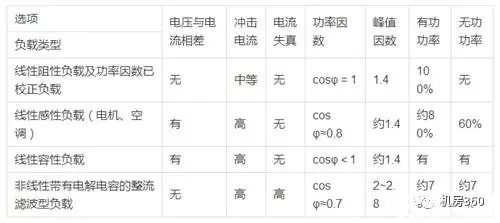UPS is the uninterruptible power supply. It is a system device that connects a battery (mainly maintenance-free lead-acid battery) to a host computer and converts DC power into commercial power through a module circuit such as a host inverter.
It is mainly used to provide a stable, uninterrupted power supply to a single computer, computer network system or other power electronic equipment such as solenoid valves, pressure transmitters, etc. When the mains input is normal, the UPS will supply the utility voltage to the load for use. The UPS at this time is an AC mains voltage regulator. At the same time, it also charges the internal battery; when the mains power is interrupted (accidental power failure) At the time, the UPS will immediately supply the 220V AC to the load by switching the DC power of the battery to the load through the inverter zero switching method, so that the load can maintain normal operation and protect the load software and hardware from being damaged. UPS devices usually provide protection against over-voltage or under-voltage.
Related concepts
1. Active power: Energy that can be converted into other forms of energy (heat, light, kinetic energy). Expressed in P, units are W. In general, active power is relative to a purely resistive load.
2. Reactive power: The power transferred from the energy source to the load and reflecting the power exchange condition is reactive power. Expressed in Q, the unit is Var. It is due to inductive loads, capacitive loads, and voltage and current distortions. This power can cause extra current loss.
3. Apparent Power: The geometric sum of active power and reactive power (that is, the root mean square of the sum of squares), which is used to represent the capacity of electrical equipment. Expressed in S, the unit is VA.
4. Power factor: The phase difference between sinusoidal AC voltage and current is called the power factor angle, expressed in Φ, and there is no unit, and the cosine value of this power factor angle is called power factor. It depends on the circuit component parameters and operating frequency, the power factor of a purely resistive circuit is 1, and the power factor of a purely inductive-capacitive circuit is zero. Power factor cosineΦ=P/S.
5. Crest Factor: The crest factor refers to the ratio of the peak value of the current instantaneous value to its effective value. It is used to describe the inrush current. If the crest factor of the power supply equipment is higher, it indicates that the equipment is more resistant to impact.
UPS load nature
1, the nature of the load

2, the main characteristics of different loads

Load type
Linear resistive load and power factor Corrected load No medium No cosφ=11.4 100% None
Linear sexy load (motors, air conditioners) high without cosφ≈0.8 about 1.4 about 80% 60%
Linear capacitive load has high no cosφ<1 about 1.4 there is
Non-linear rectifier-filtered load with electrolytic capacitors without high cosφ≈ 0.72-2.8 about 70% about 70%
3, when the load is the following equipment, choose UPS capacity should be careful:
1) Air Conditioning: It is generally forbidden to use UPS for power supply, because the starting shock is very large and belongs to inductive load (determine if the frequency conversion starts the air conditioner)
2) Laser printer: large margin UPS should be selected because of the frequent inrush current during its operation
3) Copiers, high-speed operations: as above
4) Fluorescent lamp: Large margin UPS power supply should be selected because of large starting surge current and high resistive component
5) Electric wire (pure resistor load): It is necessary to select a large margin UPS power supply because it is a resistive load
6) Motor (inductive load): need to select large margin UPS power supply, because it is inductive load, and start alluvial high (to determine whether to start the motor frequency conversion)
UPS load capacity selection principle
When the load is calculated for the computer load UPS capacity:
Need to design UPS capacity = design load power ÷ 0.8 (UPS output power factor) ÷ 0.6 (the UPS host ideal load is 60% of output power)
For example, the power statistics of the engine room load are as follows:
Digital hard disk monitoring and recording host: 350W, 6 sets, 2100W
Display: 120W, 6 sets, 720W;
Camera: Average 2W, 86, 172W
Monitor: 150W, 6 units, 900W
Matrix host: 180W
The above equipment power total: 4072W.
Need to design UPS capacity = 4072W ÷ 0.8 (UPS output power factor) ÷ 0.6 (the UPS host ideal load is 60% of output power) = 8.48KVA
Generally, the UPS power is an integer, and the double number is more suitable for future expansion. Therefore, it is ideal to select a 10KVA UPS.
These machines belong to high speed steel plate drilling machine,moving speed of X.Y axis is 0-8m/min,suitable large plate drilling work.
CNC drilling machine for drilling holes in steel plates. The processed workpieces may be connector of steel structural buildings,
bridges, connecting plates on iron towers, or large flanges, heat exchanger tube sheets, and the like.Fully automatic machining.
High efficiency and high precision.
Cnc High Speed Drilling Machine
High Speed Drilling Machine,Cnc High Speed Drilling Machine,High Speed Driller,High Speed Steel 3D Drilling Machine
Jinan XingTian Sunshine CNC Machine Co.,Ltd , https://www.cncplate.de
